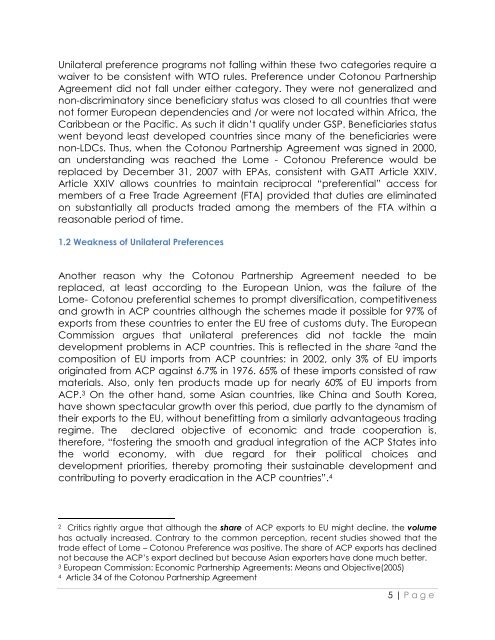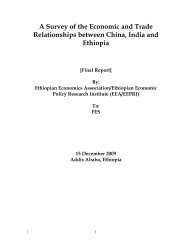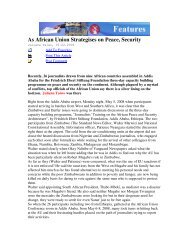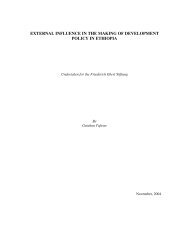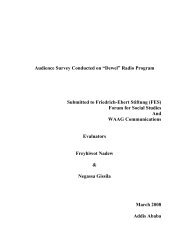Ethiopia and EPA Negotiation 2008 - FES Ethiopia
Ethiopia and EPA Negotiation 2008 - FES Ethiopia
Ethiopia and EPA Negotiation 2008 - FES Ethiopia
Create successful ePaper yourself
Turn your PDF publications into a flip-book with our unique Google optimized e-Paper software.
Unilateral preference programs not falling within these two categories require a<br />
waiver to be consistent with WTO rules. Preference under Cotonou Partnership<br />
Agreement did not fall under either category. They were not generalized <strong>and</strong><br />
non-discriminatory since beneficiary status was closed to all countries that were<br />
not former European dependencies <strong>and</strong> /or were not located within Africa, the<br />
Caribbean or the Pacific. As such it didn’t qualify under GSP. Beneficiaries status<br />
went beyond least developed countries since many of the beneficiaries were<br />
non-LDCs. Thus, when the Cotonou Partnership Agreement was signed in 2000,<br />
an underst<strong>and</strong>ing was reached the Lome - Cotonou Preference would be<br />
replaced by December 31, 2007 with <strong>EPA</strong>s, consistent with GATT Article XXIV.<br />
Article XXIV allows countries to maintain reciprocal “preferential” access for<br />
members of a Free Trade Agreement (FTA) provided that duties are eliminated<br />
on substantially all products traded among the members of the FTA within a<br />
reasonable period of time.<br />
1.2 Weakness of Unilateral Preferences<br />
Another reason why the Cotonou Partnership Agreement needed to be<br />
replaced, at least according to the European Union, was the failure of the<br />
Lome- Cotonou preferential schemes to prompt diversification, competitiveness<br />
<strong>and</strong> growth in ACP countries although the schemes made it possible for 97% of<br />
exports from these countries to enter the EU free of customs duty. The European<br />
Commission argues that unilateral preferences did not tackle the main<br />
development problems in ACP countries. This is reflected in the share 2 <strong>and</strong> the<br />
composition of EU imports from ACP countries: in 2002, only 3% of EU imports<br />
originated from ACP against 6.7% in 1976. 65% of these imports consisted of raw<br />
materials. Also, only ten products made up for nearly 60% of EU imports from<br />
ACP. 3 On the other h<strong>and</strong>, some Asian countries, like China <strong>and</strong> South Korea,<br />
have shown spectacular growth over this period, due partly to the dynamism of<br />
their exports to the EU, without benefitting from a similarly advantageous trading<br />
regime. The declared objective of economic <strong>and</strong> trade cooperation is,<br />
therefore, “fostering the smooth <strong>and</strong> gradual integration of the ACP States into<br />
the world economy, with due regard for their political choices <strong>and</strong><br />
development priorities, thereby promoting their sustainable development <strong>and</strong><br />
contributing to poverty eradication in the ACP countries”. 4<br />
2 Critics rightly argue that although the share of ACP exports to EU might decline, the volume<br />
has actually increased. Contrary to the common perception, recent studies showed that the<br />
trade effect of Lome – Cotonou Preference was positive. The share of ACP exports has declined<br />
not because the ACP’s export declined but because Asian exporters have done much better.<br />
3 European Commission: Economic Partnership Agreements: Means <strong>and</strong> Objective(2005)<br />
4 Article 34 of the Cotonou Partnership Agreement<br />
5 | P a g e


